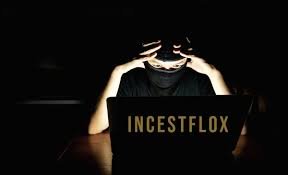Understanding Incestflox: A Controversial Digital Phenomenon
In the vast and often unregulated world of online content, certain themes emerge that provoke intense debate due to their moral, psychological, and legal implications. One such topic is incestflox, a term increasingly used to describe digital media, discussions, or online subcultures that revolve around themes of incest—whether fictional, dramatized, or simulated. Although it might appear obscure at first, incestflox has slowly found its way into fringe online communities, fan fiction platforms, adult entertainment niches, and even video games. This has given rise to a mix of fascination, concern, and ethical dilemmas.
Incestflox is not merely a term—it symbolizes a growing conflict between the freedom of expression online and the responsibility to prevent the normalization of taboo and potentially harmful content. Whether people are passively encountering this content or actively engaging with it, the consequences go far beyond personal taste. For some, it raises questions about censorship, personal freedom, and the role of fantasy in art. For others, it’s an alarming signal of desensitization and moral decay in digital spaces.

The Rise of Incestflox in Online Subcultures
The internet has long been a place where niche interests flourish, but incestflox represents one of the more disturbing trends that have gained visibility. As digital communities form around even the most fringe topics, incest-themed stories, roleplays, and animated content have developed their own followings. Often found under euphemisms or hidden behind age-verification gates, this material is shared and consumed within insulated bubbles of like-minded users.
Several factors contribute to the emergence of incestflox. Anonymity plays a big role—people can explore controversial content without revealing their identity. Secondly, the borderless nature of the internet allows ideas to spread without consideration for local cultural or legal standards. Lastly, as shock value becomes a currency for engagement, taboo topics often rise to prominence because they generate clicks, comments, and debate.
In many cases, these incestflox communities are not openly advocating for real-world incest. Rather, they engage with fictional depictions that may include stylized or exaggerated scenarios. However, even when the content is entirely fictional, it poses difficult questions about its influence on perception, particularly among young or emotionally vulnerable users.

Psychological Impacts and Potential Harm
One of the most frequently debated aspects of incestflox is its psychological impact on both creators and consumers. Content that explores taboo family dynamics—no matter how fictional—can stir complex emotional responses. For individuals with a history of abuse or unresolved trauma, this type of material might act as a trigger, leading to heightened anxiety, depression, or re-traumatization.
Even among those without prior experiences of trauma, excessive exposure to incestflox may contribute to emotional desensitization. Over time, repeated consumption of taboo content can shift a person’s threshold for what is considered “normal” or acceptable. In online environments where community feedback and reinforcement play a role, there’s also a risk that unhealthy narratives may be validated and perpetuated.
Psychologists often emphasize the need for critical thinking and emotional awareness when engaging with controversial media. The concern isn’t always that someone will mimic what they see in media, but rather that their understanding of relationships, boundaries, and ethics may become blurred. Given that incest is one of the most strictly taboo subjects across cultures, incestflox walks a dangerous line between fiction and influence.

Ethical Considerations in Media and Creativity
Art and fiction have long explored the boundaries of morality, often venturing into uncomfortable territory to challenge audiences. However, there’s an important distinction between thought-provoking art and material that seeks to titillate or sensationalize deeply inappropriate behavior. This is where incestflox becomes ethically contentious.
Creators who defend incestflox content often invoke freedom of expression, arguing that fictional scenarios do not equate to advocacy for real-life behavior. They compare such works to horror films or crime dramas, which also depict unethical or violent actions. But critics argue that while all art can challenge norms, not all forms of creative expression are socially responsible.
The ethical argument centers on intent and impact. If incestflox is created purely for shock value or erotic appeal, it raises serious questions about whether the content serves any constructive purpose. Furthermore, such content can contribute to an online ecosystem where extreme behavior is not only normalized but actively celebrated. In this context, the ethical concerns surrounding incestflox are not just about individual choices but about the collective culture being formed.
Legality and Platform Responsibility
Legality is another significant aspect of the incestflox issue. Most countries have strict laws around the depiction of incest, particularly when it involves minors, even in animated or fictional form. Platforms that host user-generated content are caught in a legal and moral bind—they must balance user freedom with compliance to the law and community safety.
Many websites have begun to implement stricter content policies, explicitly banning incest-themed material. However, enforcement remains difficult. Users often circumvent moderation through coded language or private forums. The line between fantasy and illegality can become blurred, especially when fictional characters are designed to resemble minors or family members.
For platforms, the challenge is twofold: first, developing technology to detect and remove inappropriate content; and second, creating community guidelines that clearly define what is and isn’t allowed. Failing to address incestflox content could not only damage a platform’s reputation but also expose it to legal risk.
Cultural Reactions and Global Perspectives
Not every culture reacts to incestflox in the same way. In some regions, even fictional portrayals of incest are banned outright and met with criminal penalties. In others, the content may be tolerated under freedom of speech laws, though still heavily stigmatized. Global access to digital platforms means that content created in one country may offend or break laws in another, creating a chaotic patchwork of norms and responses.
This cultural divide complicates discussions around censorship and freedom. While Western nations often champion individual rights and creative liberty, many Asian and Middle Eastern societies prioritize collective morality and tradition. These differing values affect how incestflox is received and regulated, but the underlying concern—protecting people from psychological and moral harm—remains consistent.
As online platforms become more globalized, creators and consumers alike must navigate these differences carefully. Cultural sensitivity and legal awareness are becoming essential skills for those engaging in controversial online media.
Responding as a Society: Awareness and Education
Combating the proliferation of incestflox requires more than censorship—it calls for education, awareness, and emotional intelligence. Parents, educators, and mental health professionals need to be part of the conversation, especially when young people are exposed to potentially damaging content.
Digital literacy programs can help individuals understand the difference between healthy exploration and harmful normalization. Therapy and counseling should be available for those affected, whether through trauma, confusion, or addiction to extreme content. Encouraging open conversations about media consumption, boundaries, and values will create safer and more informed digital environments.
Moreover, creators who venture into taboo areas like incestflox should reflect deeply on their motivations and the potential consequences of their work. Art can and should be bold, but it also carries a responsibility to challenge constructively rather than exploit.
Also read: JonathonSpire: Pioneering Ethical Digital Marketing in 2025
Conclusion: The Future of Incestflox and Digital Ethics
The debate around incestflox will likely continue as digital culture evolves and people push the boundaries of expression. But as with all controversial content, its presence forces society to ask deeper questions about the limits of freedom, the nature of fantasy, and the role of media in shaping values. Rather than react with fear or denial, the best approach is a balanced one—rooted in education, mental health awareness, ethical creativity, and legal clarity.
Whether one views incestflox as dangerous or defensible, it serves as a reminder that the digital world is not immune to the consequences of what it portrays. In a time when online content can shape beliefs and behavior more than ever, choosing what to create and consume becomes an act of real-world significance.

